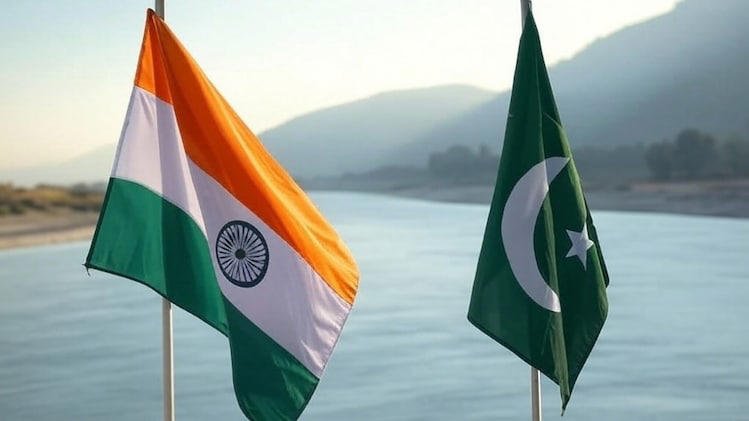Overview
The eruption of hostilities between India and Pakistan in early 2025—triggered by a deadly attack in Pahalgam and followed by India’s Operation Sindoor—has reignited one of the world’s most persistent geopolitical fault lines. Pakistan’s retaliatory military claims mark a significant escalation, deepening strategic uncertainty across the subcontinent.
While the confrontation remains localized, its economic aftershocks are broad and consequential. This report dissects the fiscal, financial, and investor responses across both economies, quantifies potential long-term risks, and provides a forward-looking view on regional stability.
Financial Market Impact: Confidence Versus Contagion
India: Local Confidence Anchors Stability
Indian equities remained largely unshaken, with benchmark indices posting slight gains post-conflict. This performance underscores investor confidence in India’s underlying economic fundamentals—driven by resilient consumer demand, diversified exports, and consistent policymaking.
However, the currency markets told a different story. The rupee experienced its sharpest daily drop in a month, falling 0.5% against the U.S. dollar. The shift reflects caution from global investors as oil prices ticked up and capital flows came under scrutiny.
Pakistan: Market Anxiety Signals Systemic Fragility
Pakistan’s financial reaction was immediate and severe. The Karachi Stock Exchange fell sharply, driven by fears of increased fiscal pressure, debt repayment risks, and reduced external funding. The threat to the Indus Waters Treaty—a vital lifeline for Pakistan’s agriculture—has exacerbated market uncertainty, highlighting how geopolitical leverage can transform into economic pressure points.
Fiscal Stress and Policy Dissonance
India: Expanding Defense Amid Growth Goals
India is likely to reallocate resources to defense in the near term, potentially delaying infrastructure, education, and climate-focused initiatives. While the central government’s fiscal deficit target of 5.1% is still within bounds, protracted military operations could test its credibility. Fortunately, India’s broad domestic consumption base and decentralized economic model afford it a buffer against deeper shocks.
Pakistan: Structural Constraints and Escalating Risk
For Pakistan, the fiscal outlook is deteriorating. Defense already accounts for a significant share of government spending. Any expansion will strain social and developmental budgets, threaten IMF compliance, and amplify inflation. These dynamics risk triggering social unrest, raising both humanitarian and investment concerns.
Investor Behavior and External Capital Shifts
India: Adjusted Premiums, Persistent Interest
While short-term risk premiums have risen on Indian bonds, foreign direct investment sentiment remains constructive. India continues to benefit from strategic positioning in global supply chains, particularly as Western firms diversify away from China.
Trade negotiations with the U.K. and U.S. proceed, signaling investor confidence in India’s medium-term credibility, even amid localized conflict.
Pakistan: Flight of Capital, Collapse in Tourism
Pakistan is witnessing accelerated capital flight. The tourism sector—a vital soft power asset—has seen catastrophic declines. Neelum Valley bookings, a proxy for domestic travel sentiment, have fallen by 90%. With weakened sovereign credit profiles and currency depreciation risks mounting, foreign capital inflows are effectively frozen.
Sectoral Impact: Tactical Gains, Strategic Disruption
India: Defense Uptick Offsets Manufacturing Disruption
India’s indigenous defense and surveillance sectors are positioned to benefit from government procurement activity. Initiatives under the “Make in India” framework may gain momentum.
However, manufacturers—especially those in export-dependent sectors—have expressed concern over logistics, regulatory delays, and employee safety in border-adjacent regions. These concerns may delay capital projects and erode operational efficiency.
Pakistan: Exposure in Core Export Sectors
Textiles, agri-processing, and SMEs in Pakistan are particularly exposed. Higher energy import bills, disrupted transportation corridors, and declining investor sentiment could stifle output. With export revenues and remittances forming the backbone of the external account, sustained pressure could result in balance-of-payment distress.
Economic Cost Estimates: Quantifying the Escalation
Military mobilization and sustained operations carry significant economic costs. Conservative projections estimate India’s direct military expenditures between ₹1,460 crore and ₹5,000 crore per day. Indirect losses—through lower tourism, investment deferrals, and elevated risk premiums—could push daily costs to ₹1.34 lakh crore (~$17.8 billion).
Pakistan’s economic loss, though smaller in absolute terms, is more severe in proportional terms. Even limited infrastructure damage or escalation could subtract multiple points from GDP, risking recession and collapse of fiscal recovery frameworks.
Broader Regional and Global Ramifications
The economic stakes extend beyond South Asia. Global energy markets have already adjusted—oil futures climbed modestly in response to conflict risk. As the region becomes increasingly pivotal to global supply chains, sustained instability could lead to strategic realignments, with Southeast Asia and Eastern Europe emerging as preferred manufacturing alternatives.
Regional initiatives, such as SAARC and INSTC, face paralysis, while intergovernmental development projects risk cancellation amid security concerns.
Strategic Recommendations
To contain the fallout and preserve economic stability, the following actions are critical:
- Bilateral De-escalation Mechanisms: Institutionalize military hotlines, third-party mediation options, and confidence-building measures.
- Investor Engagement Strategies: Governments must transparently communicate economic priorities, fiscal resilience plans, and sector-specific safeguards.
- IMF and Multilateral Support Activation: Pakistan may require emergency stabilization financing to address fiscal shock and prevent macroeconomic contagion.
- Supply Chain Risk Mapping: Multinationals must reassess exposure and contingency plans for South Asia operations, especially in export-reliant zones.
Conclusion: The Cost of Strategic Miscalculation
The 2025 India-Pakistan tensions reveal the economic fragility embedded in unresolved geopolitical rivalries. India, with its institutional depth and policy continuity, retains the capacity to absorb short-term disruptions. For Pakistan, however, the stakes are existential—its fiscal room is vanishing, its foreign reserves are dwindling, and its economic recovery is at risk of reversal.
The economic case for peace has never been clearer. Diplomacy must not be viewed as a soft alternative to force—but as a foundational pillar for regional stability and shared prosperity in South Asia.

